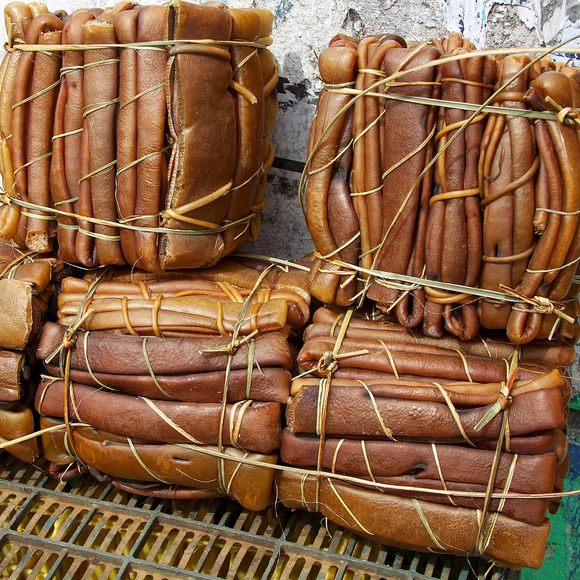The briny, edible seaweed known as cochayuyo, or Durvillaea antarctica, has a long history in southern Chilean cuisine. Archaeologists found dried remains of cochayuyo in 14,000-year-old hearths at Monte Verde, suggesting that early communities used the protein-heavy plant as a dietary staple.
Chileans still opt to include cochayuyo in family recipes, despite no longer needing to lean on the seaweed for sustenance. Cooks chop up the plant’s stem and add it to traditional stews, ceviches, and salads. Though its flavor is rather mild, it does add a chewy texture and saltiness to dishes. Creative vegetarian chefs also use cochayuyo as a meat replacement, working it into empanadas, croquettes, and risottos.
The seaweed has plenty of fans beyond Chile’s shoreline. The country exports dried cochayuyo to Taiwan, and the kelp grows wild around New Zealand, as well.
Written By
 rachelrummel
rachelrummel
Sources
- eatingchile.blogspot.com/2010/04/seaweed-cochayuyo-and-luche.html
- science.sciencemag.org/content/320/5877/784
- books.google.com/books?id=LlePAePLlqkC&pg=PA71&lpg=PA71&dq=cochayuyo+uses&source=bl&ots=ddX-YiZqCX&sig=fS2gjy4htDCLVWXHbykpRh-CxdY&hl=en&sa=X&ved=0ahUKEwjY6rr9xPnbAhUH5oMKHdMXBxkQ6AEIVjAD#v=onepage&q=cochayuyo%20uses&f=false
- www.cntraveler.com/stories/2015-09-25/the-15-best-restaurants-in-latin-america-pujol-central
- www.thisischile.cl/the-multiple-properties-of-cochayuyo-the-chilean-seaweed/?lang=en














